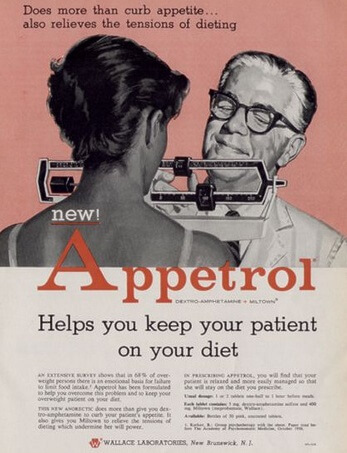![]() “Beginning with the passage of the Federal Food, Drug, and Cosmetic Act in 1938 and escalating with the 1962 Kefauver-Harris amendments, increasing pressure has been placed on pharmaceutical manufacturers to demonstrate that a drug’s benefits outweigh its risks. Nowhere has the question of risk versus benefit come under greater scrutiny than with anorectics.
“Beginning with the passage of the Federal Food, Drug, and Cosmetic Act in 1938 and escalating with the 1962 Kefauver-Harris amendments, increasing pressure has been placed on pharmaceutical manufacturers to demonstrate that a drug’s benefits outweigh its risks. Nowhere has the question of risk versus benefit come under greater scrutiny than with anorectics.
After the approval in the 1940s and 1950s of a number of amphetamine and amphetamine-like compounds for the treatment of obesity, the U.S. Food and Drug Administration struggled to define the efficacy and safety of these agents. Labeling restrictions on duration of use and warnings about abuse and addiction ultimately contributed to the reduced use of anorectics.
That trend continued until the mid-1990s, when the off-label use of fenfluramine plus phentermine (fen-phen) and the approval of dexfenfluramine gave rise to widespread, long-term use of anorectics to treat obesity….”
The adverse effects that came to be associated with fenfluramine and dexfenfluramine, leading to their eventual withdrawal from the market, gave pause to regulators, physicians, patients, and drug companies alike. Sibutramine, the latest anorectic to enter the market, is now the focus of a landmark trial that is examining, for the first time, whether drug-induced weight loss reduces the risk for fatal and nonfatal cardiovascular disease.
From: Colman E. Anorectics on trial: a half century of federal regulation of prescription appetite suppressants. Ann Intern Med. 2005 Sep 6;143(5):380-5. U.S. Food and Drug Administration, Center for Drug Evaluation and Research, Rockville, Maryland. full-text pdf
